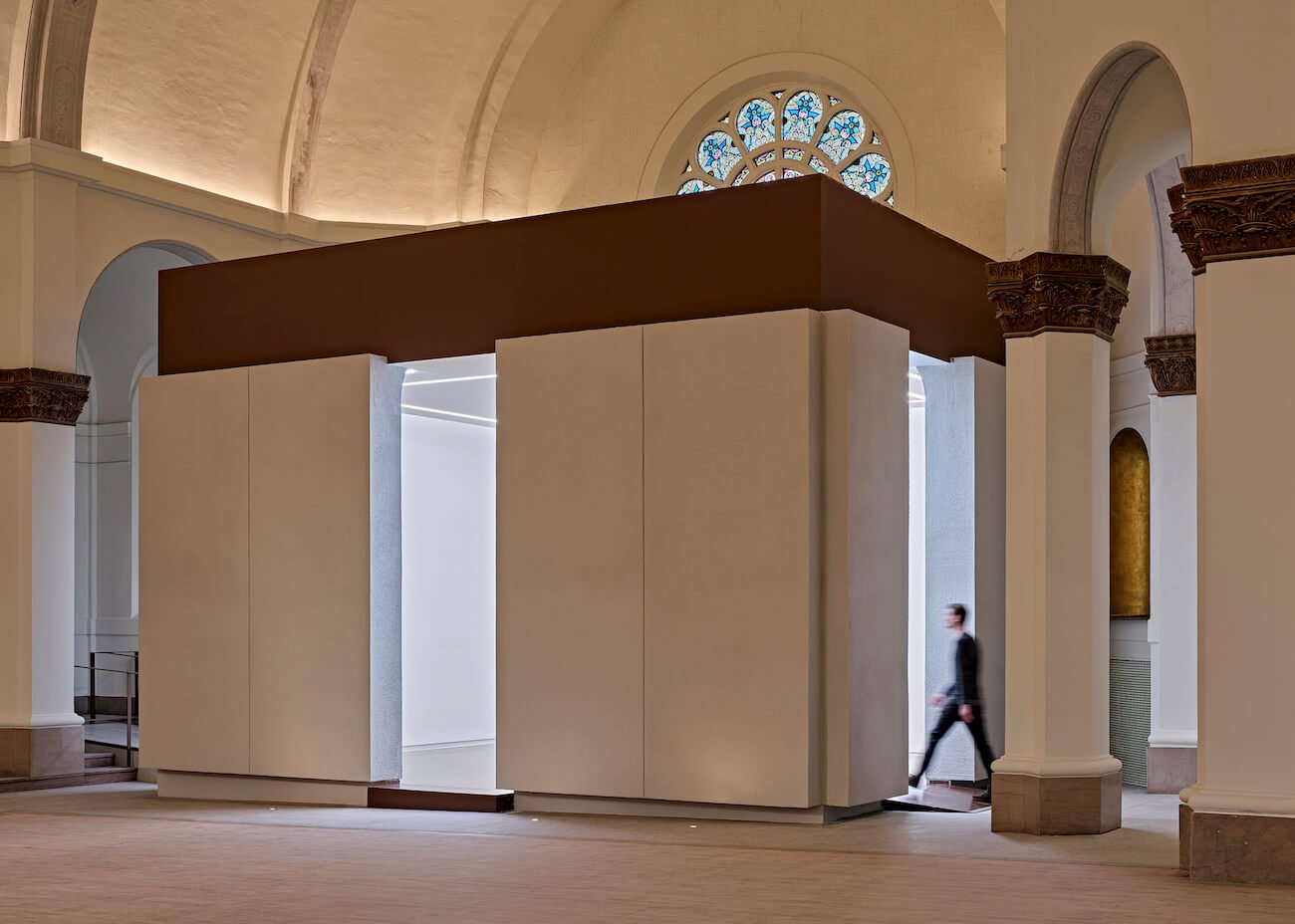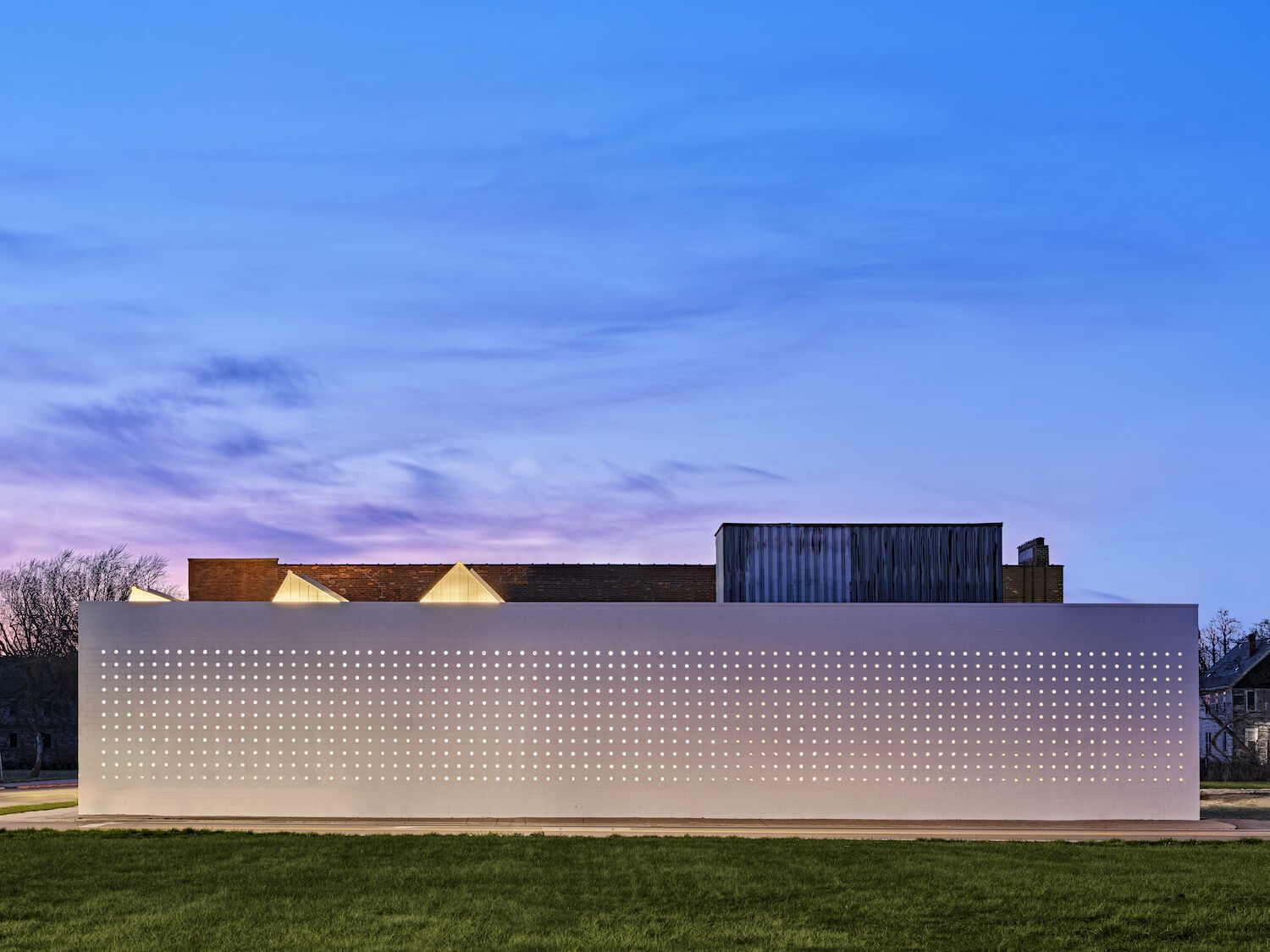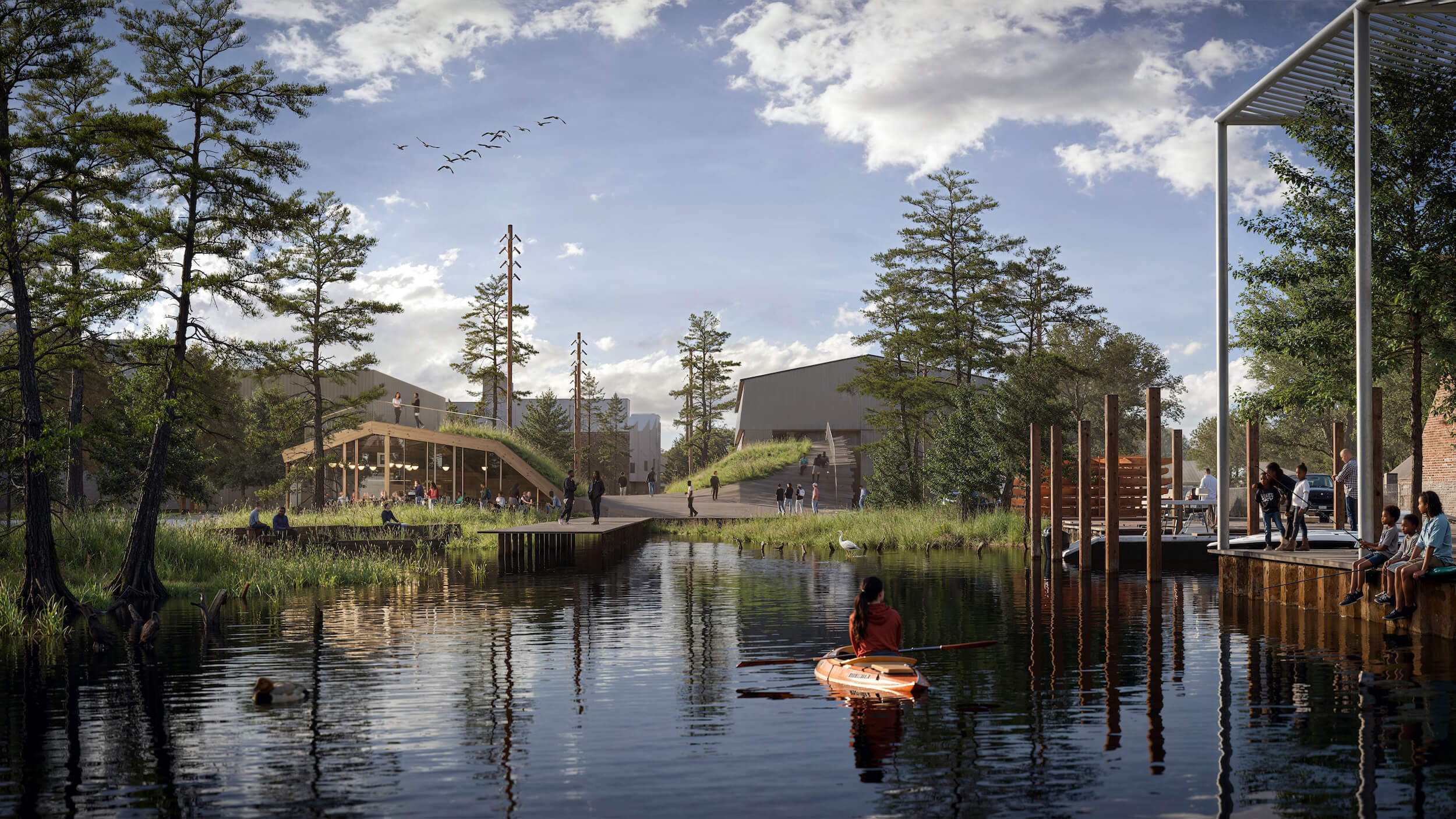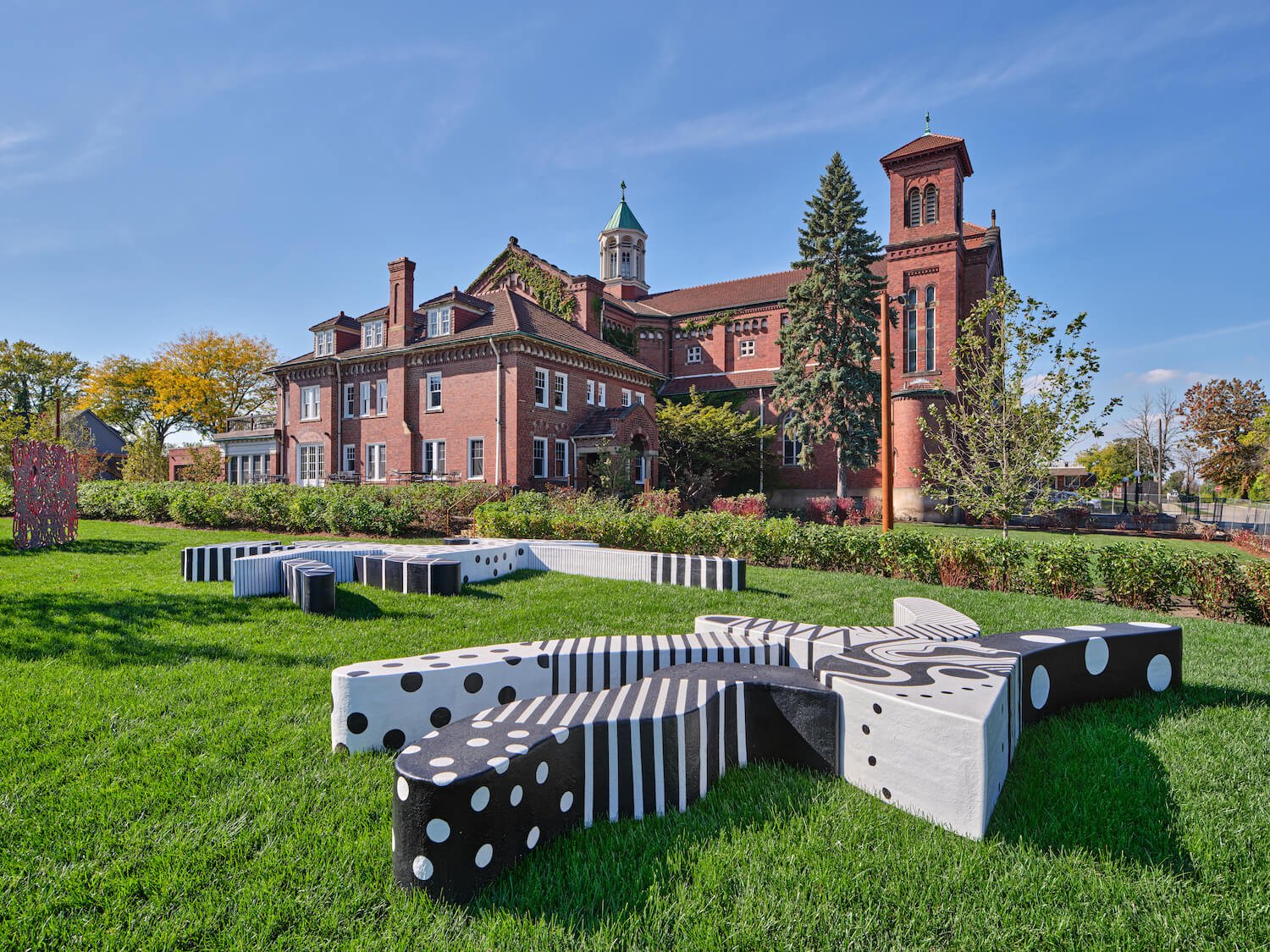
In a Catholic church, the figure of Christ comes in many guises. From the cross atop the steeple and the constellation of representative paintings and stained-glass windows that frame the altar to the ritual transubstantiation of the Eucharist, a divine spirit permeates. On Parkview Street in Detroit, however, the blood of Christ is channelled into a surprising vessel.
Inside the Romanesque Revival parish, a portrait by American artist Jordan Eagles has painted the Saviour using fluid drawn from the vein of an HIV survivor. While the composition is a nod to Leonardo da Vinci’s Salvator Mundi — which the wall text notes set a record for the most expensive painting ever sold — the medium evokes the belief that Jesus gave his blood for all of humanity. Standing before it, I find myself contemplating both the meaning of Christianity and the commodification of art — and then a more prosaic reality: This is no ordinary church.

I’m not sure whether to call it a church at all. After closing its doors in 2016, the house of worship then known as the Good Shepherd Catholic Church sat vacant. While the congregation merged with another parish, the majestic building itself faced an inauspicious future. Situated in an inconspicuous pocket of the city between the affluent communities of Indian Village and Grosse Pointe, the church — which anchored a once-thriving neighbourhood — was surrounded by a landscape of vacant lots and soon-to-be demolished homes, reflecting the pattern of post-industrial divestment and depopulation that shapes much of central Detroit. In 2021, however, the 110-year-old structure was announced as a future home for gallerists Library Street Collective, led by Anthony and JJ Curis.

Three years later, the former church sits at the heart of the nascent but fast-growing Little Village arts campus. Framed by a new public sculpture garden and an inviting urban park, the venue now known simply as The Shepherd is a 1,300-square-metre gallery, library and community hub. Carefully restored and adapted by Brooklyn-based architects Peterson Rich Office (PRO), the intervention retains both the building’s imposing bones and its delicately intricate interior details. On the exterior, only the weathered steel arch that frames the main entry subtly signals the transformation from a sacred setting into a secular one.

Past the front door, the metamorphosis is at once obvious and understated. The vestibule has been turned into a reception and a new gallery volume has been inserted into the back of the nave. From the entrance, however, the interior maintains a long open view to the altar, preserving a sense of spatial and spiritual order. Combining the minimalism of a white cube with subtle texture and patina, the room is one of two similar exhibition spaces slotted into the building, while another new gallery space is tucked into the cruciform interior’s north transept. Beyond the two rooms, exhibited art is subtly woven through the church interior; larger works rest on the open floor, and smaller pieces adorn the columns — where I encounter Eagles’s Vinci — and the restored altar. Meanwhile, the south transept is given over to the Little Village Library, a reading room and book collection curated by Black Art Library founder Asmaa Walton.

Complemented by comfortable tables and private reading rooms (adapted from erstwhile confessionals), the eclectic yet accessible collection spans from rare and historic art volumes to children’s books. A long stone bookshelf anchors the space, inviting visitors to read, study and hang out. “In an art gallery, people don’t think they can touch the books; they think it’s part of the work. So it’s important to have these spaces where you can interact with the books, take them off the shelf and read,” says Walton. Meanwhile, the altar and retained nave create an open space for community events and performances. (Days after my visit, a panel discussion and orchestral tribute to John Coltrane activated the space.)

The integration of art with public space and community-building is central to both The Shepherd and the surrounding Little Village community. “The planning and transformation of the church was very much grounded in the idea of bringing people together,” says PRO co-founder Miriam Peterson. It’s a deft architectural feat. While the mix of uses feels intuitive and uncluttered, it’s an unusual medley — facilitated by equally unconventional design strategies. “On some level, it’s kind of a weird and radical thing to do, to put such big volumes into an existing building,” says Peterson, explaining that the new exhibition spaces “support the technical program of contemporary art gallery, but without undermining the ability of the church to continue to function in the way that a church historically has in a community.”

This spirit animates the whole of the campus, where a landscape designed by New York–based OSD conveys visitors through the block. Alongside ample new seating and greenery (composed entirely of native plantings), a prominent sculpture garden honours legendary Detroit artist Charles McGee, extending the art program into the public realm. And, as with the gallery, the visitors comprise a mix of regulars and curious tourists, as well as neighbours and Detroiters of all stripes, including a trickle of former parishioners. As Shepherd artistic director Allison Glenn puts it, “We thought of the whole building — and the block — as a canvas. It’s all an invitation to explore.”

The varied setting – which also includes a skate park designed by iconic skateboarder Tony Hawk and artist McArthur Binion and a gently elevated rolling lawn (a subtle nod to the curved apse of The Shepherd) – is knit together by gardens and footpaths. The porous network of gravel walkways elegantly transitions into a flood-resistant permeable parking lot that, when free of cars, doubles as a seamless extension of the pedestrian space. The walkways are enhanced by the addition of red brick, the interplay of hues introducing another sinuous highlight; the crushed masonry, salvaged from a local demolished building, also pays quiet homage to architectural context. “This is a place with history and meaning, and it should be respected,” says OSD founder Simon David. “There’s beauty in repair and re-use.”

Between the skate park and the raised lawn, a pair of houses has been combined into one. The two homes — a handsome Victorian and a 20th-century Detroit duplex — were both likely to be razed under the municipal Detroit Demolition Program. Fortunately, Library Street’s Anthony and JJ Curis had other plans. The duo commissioned local architect and Undecorated founder Ishtiaq Rafiuddin to reimagine the homes as a commercial setting with a bakery and a restaurant. Ingeniously, they are joined together by a shared porch. “Detroit has a really strong front porch culture, and we wanted to extend that tradition — where neighbours hang out and spend time together — into more of a public setting,” says Rafiuddin.

It’s one of several works in progress. Across the street from Rafiuddin’s BridgeHouse, Los Angeles–based Lorcan O’Herlihy Architects is leading the development of a new venue for Library Street’s Louis Buhl & Co. gallery, which is devoted to celebrating divergent practices and showcasing artists at all stages of their careers. Also in the neighbourhood, the Curises have purchased, restored and sold a handful of formerly vacant and slated-for-demolition homes while working with Rafiuddin to add a modest influx of new housing stock. So far, recent neighbours include Canadian designer Brian Richer, local gallerist Isabelle Weiss and fine art photographer and former Detroit Lions defensive end Romeo Okwara.

There’s plenty more to come. Alongside BridgeHouse, a rear annex to The Shepherd is set to be filled out by a cocktail bar playfully dubbed “Father Forgive Me.” In the meantime, the old rectory has already been converted into a small bed and breakfast (ALEO), and its top floor now houses the headquarters of Modern Ancient Brown Foundation, a non-profit providing mentorship and support to emerging BIPOC artists and writers, including an on-site artist residency program. A block to the south, Library Street has engaged OSD — and celebrated New York designers SO – IL — to reimagine an underused marina and boat storage complex as an extension of the cultural hub, stretching Little Village to meet the Detroit River waterfront.

Two blocks north of The Shepherd, the latest addition to the neighbourhood is Lantern, an adaptive re-use complex designed by OMA. Largely surrounded by vacant land, the building’s crisp white exterior — perforated by rows of cylindrical glass blocks — emits an almost otherworldly evening glow. I’m having a hard time believing that OMA — freakin’ OMA — really has a project at the corner of Kercheval and McClellan. But as I start walking toward it, I don’t know if I’ll like what I see. From a distance, the pristine, glowing white box is all austere spectacle and starchitecture, with little hint of community or local culture. Still, I can’t deny how cool it looks, and I find myself quickening my stride in excitement as I approach.

Up close, the place tells an entirely different story. I’m charmed to find the gleaming surface dissolves into a simple array of cinder blocks, the paint chipping into the visible grout lines and the spectacle resolving into an honest and ordinary Midwestern beauty. “We found a builder who would cut even holes into the cinder blocks, and then used relatively inexpensive, standard, mass-produced rounded glass to fill in the perforations,” says OMA partner Jason Long. The glass apertures, which playfully adapt the solid CMU wall originally constructed as a low-budget warehouse addition to the commercial bakery that previously occupied the site, signal a new public presence while maintaining the site’s industrial simplicity.

The entrance is around the corner and through a sheltered inner courtyard. Here, a broad public stoop announces a 2,071-square-metre mixed-use complex. Within the white volume, the courtyard — which combines accessible circulation with ad hoc seating — slides into the interior of popular watering hole Collect Beer Bar. On a Friday evening, the joint is packed. In the older side of the building, meanwhile, the former bakery is now home to non-profit letterpress studio and education hub Signal-Return, as well as the Progressive Art Studio Collective (PASC), which is dedicated to supporting artists with developmental disabilities and mental health differences. The Lantern is also set to welcome a clothing store and a café.

On the patio, I sit down for a drink with Anthony Curis. I’d been nervous about meeting him. While I’m used to interviewing architects, many of whom relish self-important, pretentious language, they’re rank amateurs compared to their counterparts in the art world. Much as I’m genuinely impressed by what Library Street Collective has accomplished, I’m bracing for something esoteric. Yet I’m relieved to find that the man sitting across from me sounds more like a plain-spoken Midwestern hockey dad than a heavyweight gallerist and property developer. “We’re not by any means saviours to the neighbourhood or anything like that,” says Detroit-born Curis. “And our goal isn’t to play landlord but to help others build equity. None of this is even a real estate play — it’s about creating interesting and welcoming spaces and finding new ways to celebrate art.”

As Curis puts it, Little Village started with a new gallery — The Shepherd — and organically grew from there. “Instead of expanding to another city, we decided to double down in Detroit,” he says. Although the intent was never to build a neighbourhood, supporting a thriving arts community means more than renovating a church into a gallery. To bring people to the neighbourhood, whether as visitors or residents, you have to build new housing and hospitality venues, as well as green spaces and other public amenities. In the coming years, Library Street will also turn its focus to addressing more complex yet fundamental community needs, including a grocery market and non-profit artist housing. Throughout, the Curises have consistently partnered with — and celebrated — the Detroit community, from renowned artists to emerging voices.

These are good intentions. And good outcomes. Yet Little Village is also a reflection of Detroit’s uniquely depleted urban condition. Amid the demolition and depopulation, whole swathes of the city have been monopolized by individual actors. Prominent speculators, like Dennis Kefallinos, Matthew Tattarian, and so-called “blight king” Ernest Karr, have amassed dozens — sometimes hundreds — of properties, all while ignoring even the most basic maintenance and racking up a bevy of municipal fines and unpaid taxes as their property values rise. By some metrics, up to 20 per cent of the city’s real estate is locked up in speculation and the continued disinvestment it entails.

While Detroit’s more enterprising property developers offer a contrast — and sometimes a postscript — to speculative inaction, the results can be equally troubling. Over the past decade, businessman Sanford Nelson gradually purchased much of Detroit’s thriving Eastern Market neighbourhood — long a popular destination; these property acquisitions were followed by headlines proclaiming rising rents, store closures and perpetual conflicts with beloved local businesses. As Nelson himself told the Detroit News, some consider him “the devil incarnate.”

Closer to Little Village, John Hantz vowed to transform Detroit’s lower east side into a utopian urban woodland. Although some 2,000 lots were cleared and thousands of trees were planted, the high-minded enterprise has produced little more than cover for simple speculation: As stretches of scraggly monoculture forest amounted to a half-assed attempt at beautification, the investor reaped the benefits of growing property values. And while Dan Gilbert (whose real estate firm Bedrock owns a large stock of downtown) has genuinely revived much of the urban core, fellow billionaire land baron Matty Moroun shamelessly consigned the iconic Michigan Central Station to decades of decay until its purchase and restoration by the Ford Motor Company. Even award-winning Core City developer Philip Kafka has faced well-publicized tensions with tenants and community members.

In a more socio-economically healthy city, such real estate monopolies are all but impossible. While the results vary, those in Detroit carry inherent risks not found in other cities, where the caprices of individual landlords are balanced out by a more varied and competitive market. So far, Anthony and JJ Curis have made the right decisions. Still, as I walk back from the bar into the warmth of the late summer evening, I find myself wondering about the degree to which their vision — as genuinely altruistic and down-to-earth as it is — is shared by the wider local community.

I’m spending the night at ALEO, the church rectory lovingly transformed into a bed and breakfast. By the time I get into bed, the last of the lingering sun has disappeared behind the horizon. I worry about how well I’ll sleep, especially given how dead quiet Detroit can be at night. As a lifelong city guy, I prefer a din. And luckily, I get it. Outside, a group of casual revellers has gathered in OSD’s gravel parking lot turned community space. Their cars are parked with the doors open and music playing. I’m thankful for the noise, but more importantly, I’m relieved to see the place truly alive. They must have done something right after all.

In the morning, I awaken to a very different noise. It’s early on a Saturday, and I’m usually loath to leave bed on a weekend. But the peals of children’s laughter and the rolling thrum of rubber wheels on concrete pique my interest. I start to feel the excitement emanating from the crowd gathered at the skate park. Before I know it, I’m brushing my teeth and getting dressed. I can’t wait to see what’s up.
A restored church anchors a nascent urban community envisioned as an eclectic and inclusive creative haven.
